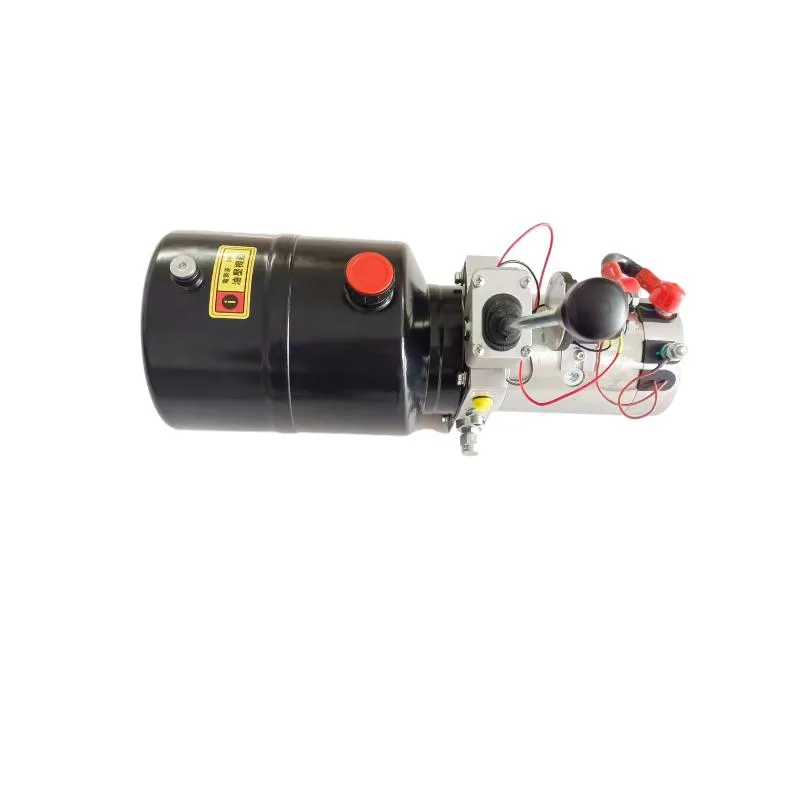ធ្នូ . 19, 2024 16:26 Back to list
Single Acting Hydraulic Cylinder Manufacturing and Production Overview
Understanding Single Acting Hydraulic Cylinders Insights from Manufacturers
Hydraulic cylinders form the backbone of numerous industrial applications, offering efficient force generation and movement control. Among these, single acting hydraulic cylinders hold a particular significance due to their simplified design and functionality. This article explores the concept of single acting hydraulic cylinders, the processes involved in their manufacturing, and the impact of various factories that produce these vital components.
What is a Single Acting Hydraulic Cylinder?
A single acting hydraulic cylinder is a type of hydraulic actuator that exerts force in one direction, generally by using hydraulic fluid to extend the piston. The return stroke is usually facilitated by an external force, such as gravity or a spring, rather than hydraulic pressure. This design is often chosen for applications where only one direction of movement is needed, which helps reduce complexity and cost.
Single acting hydraulic cylinders are widely used in construction machinery, material handling equipment, and various industrial machines. They are commonly found in applications like forklifts, compaction equipment, and even in simple mechanical systems such as jacks and presses.
Manufacturing Process
The manufacturing of single acting hydraulic cylinders involves several critical steps that ensure the final product meets required specifications and quality standards. Factories focus on several key phases in the production process
1. Material Selection High-quality materials such as steel or aluminum are chosen based on the application requirements. The choice of material affects the cylinder's durability and performance.
2. Machining The selected materials undergo precise machining processes to develop the different components of the hydraulic cylinder, including the cylinder barrel, piston, and rod. CNC (Computer Numerical Control) machines are typically used to ensure precision and consistency.
3. Surface Treatment After machining, components often receive surface treatments such as hard chroming or anodizing, which enhance wear resistance and prevent corrosion. A well-treated surface prolongs the life of the hydraulic cylinder.
4. Assembly Once all parts are ready, they are assembled into complete hydraulic cylinders. This stage involves the careful integration of seals, gaskets, and other components crucial for preventing leaks and ensuring smooth operation.
hydraulic cylinder single acting factories

5. Testing Factories conduct rigorous testing procedures to validate the performance, pressure tolerance, and reliability of the hydraulic cylinders. Hydrostatic tests and performance evaluations confirm that the cylinders meet industry standards.
6. Quality Control Continuous quality checks throughout the manufacturing process ensure that any defects are identified and rectified, thereby maintaining high production standards.
Importance of Factories in the Hydraulic Cylinder Sector
The role of factories in producing single acting hydraulic cylinders extends beyond mere production. These manufacturers are essential in driving innovation and improving technologies related to hydraulic systems.
1. Customization Many manufacturers offer customization options, allowing clients to specify dimensions, materials, and features according to their unique operational needs. This flexibility caters to diverse industries, enhancing the functional applicability of hydraulic cylinders.
2. Research and Development Factories invest in R&D to enhance the efficiency and performance of their products. Innovations in hydraulic technologies, such as improved seal designs and advanced materials, contribute to the overall performance of single acting cylinders.
3. Sustainability With increasing awareness about environmental issues, many manufacturers are now adopting sustainable practices. This includes using eco-friendly materials, optimizing production processes to reduce waste, and recycling components whenever possible.
4. Global Supply Chain The global nature of the hydraulic industry means that manufacturers play a crucial role in the supply chain, providing components to various regions and industries. This interconnected system stimulates economic growth and fosters technological exchange.
Conclusion
Single acting hydraulic cylinders are vital components in many industrial and mechanical applications. The factories that produce these cylinders are not just manufacturers; they are innovators and leaders in the hydraulic technology sector. Understanding the intricacies of their manufacturing processes and their contributions to the industry can help businesses make informed decisions about their hydraulic system needs. As technology continues to evolve, these factories will play an essential role in shaping the future of hydraulic applications worldwide.
-
High-Performance Set of 50/60-45-290 471 | Durable & Reliable Components
NewsAug.26,2025
-
Efficient Pallet Truck Power Units - Reliable Hydraulic Systems
NewsAug.25,2025
-
Premium Set of 50/60-45-290 471 Parts | High Performance
NewsAug.24,2025
-
Efficient & Reliable Double Acting Power Unit | Hydraulic Solutions
NewsAug.23,2025
-
1.5 Ton Turbocharged Cylinder 80/95-40/60-35-124 | High Performance
NewsAug.22,2025
-
High-Performance Fork Lift Hydraulic Power Units
NewsAug.21,2025
